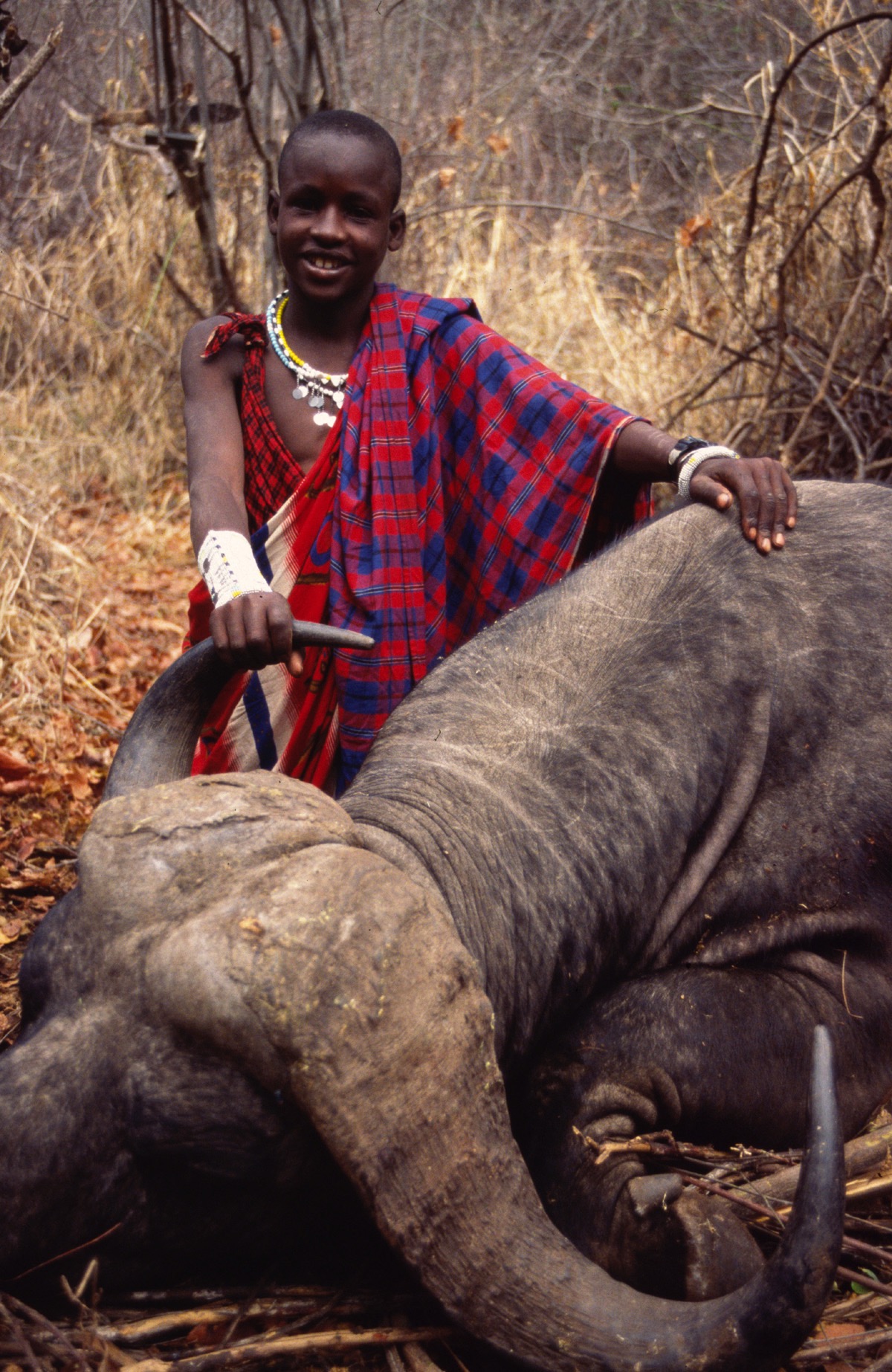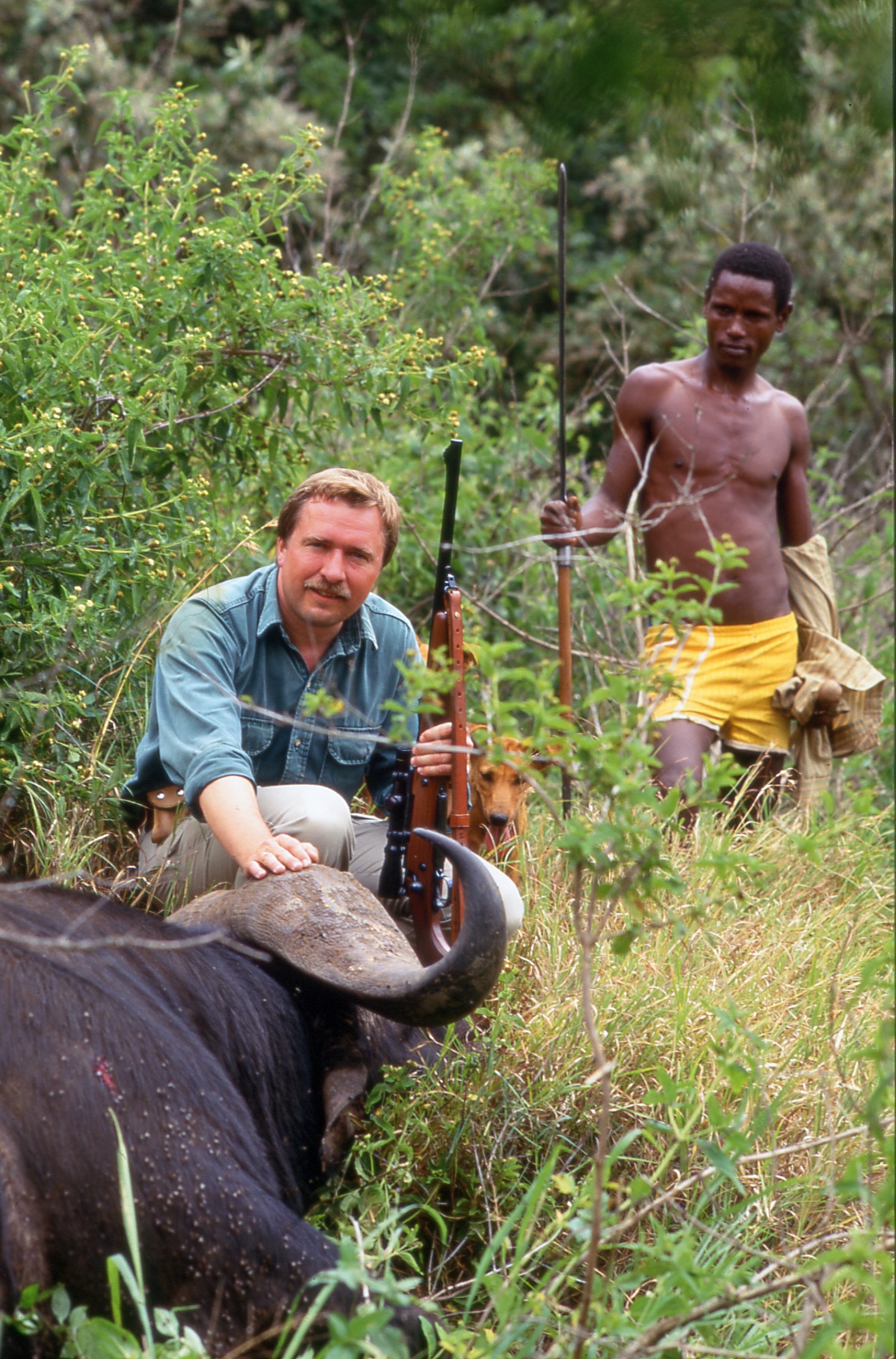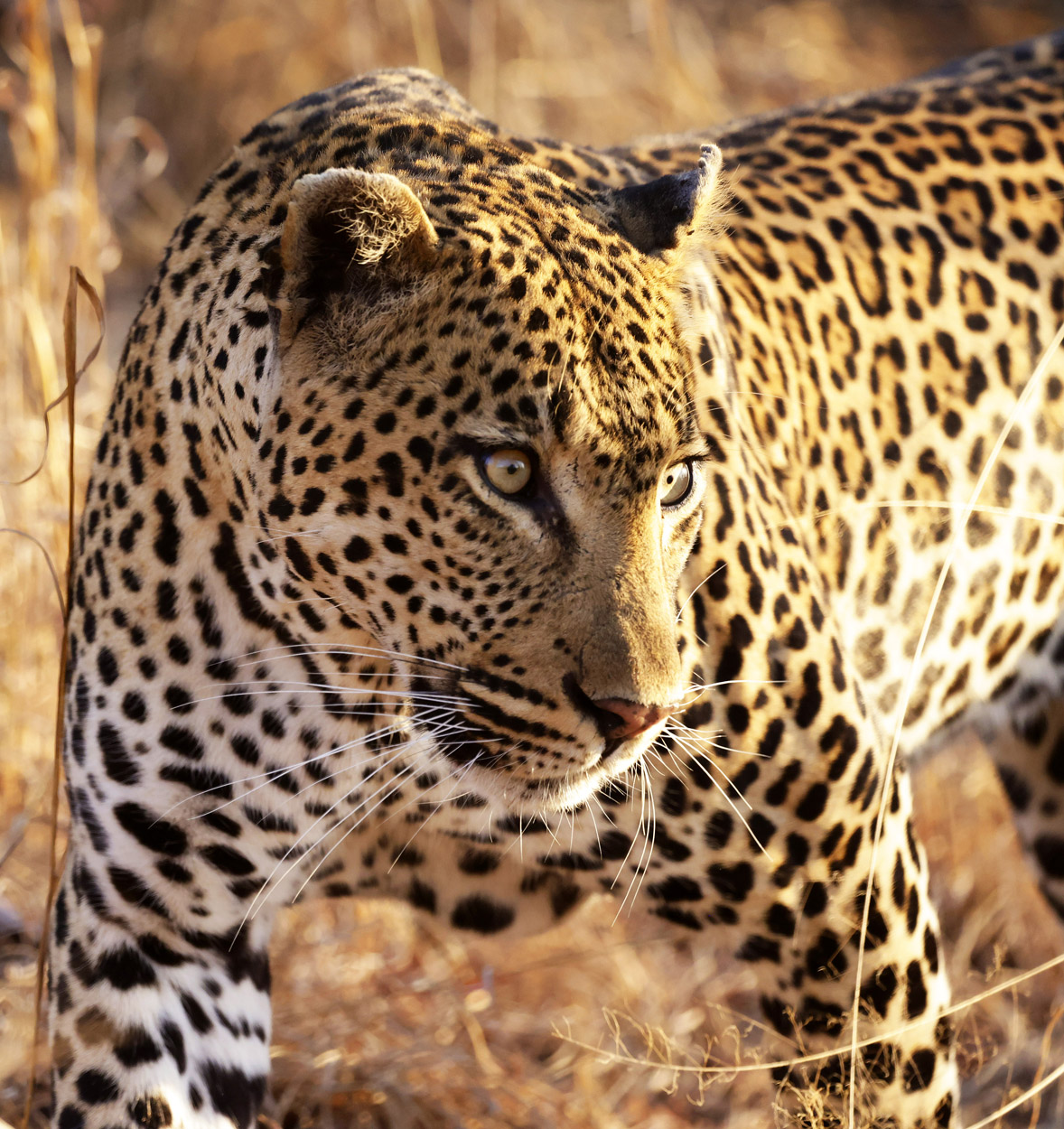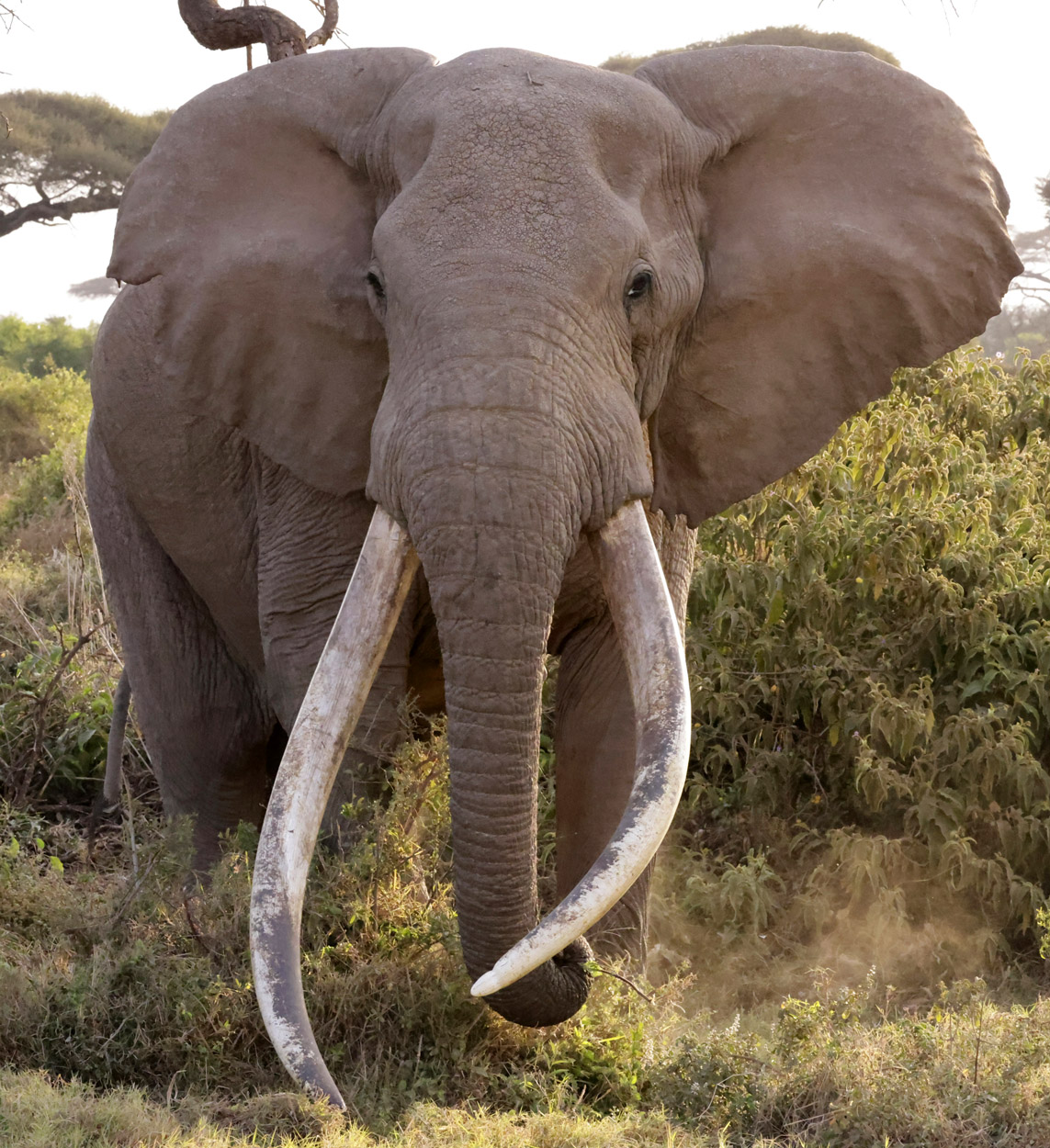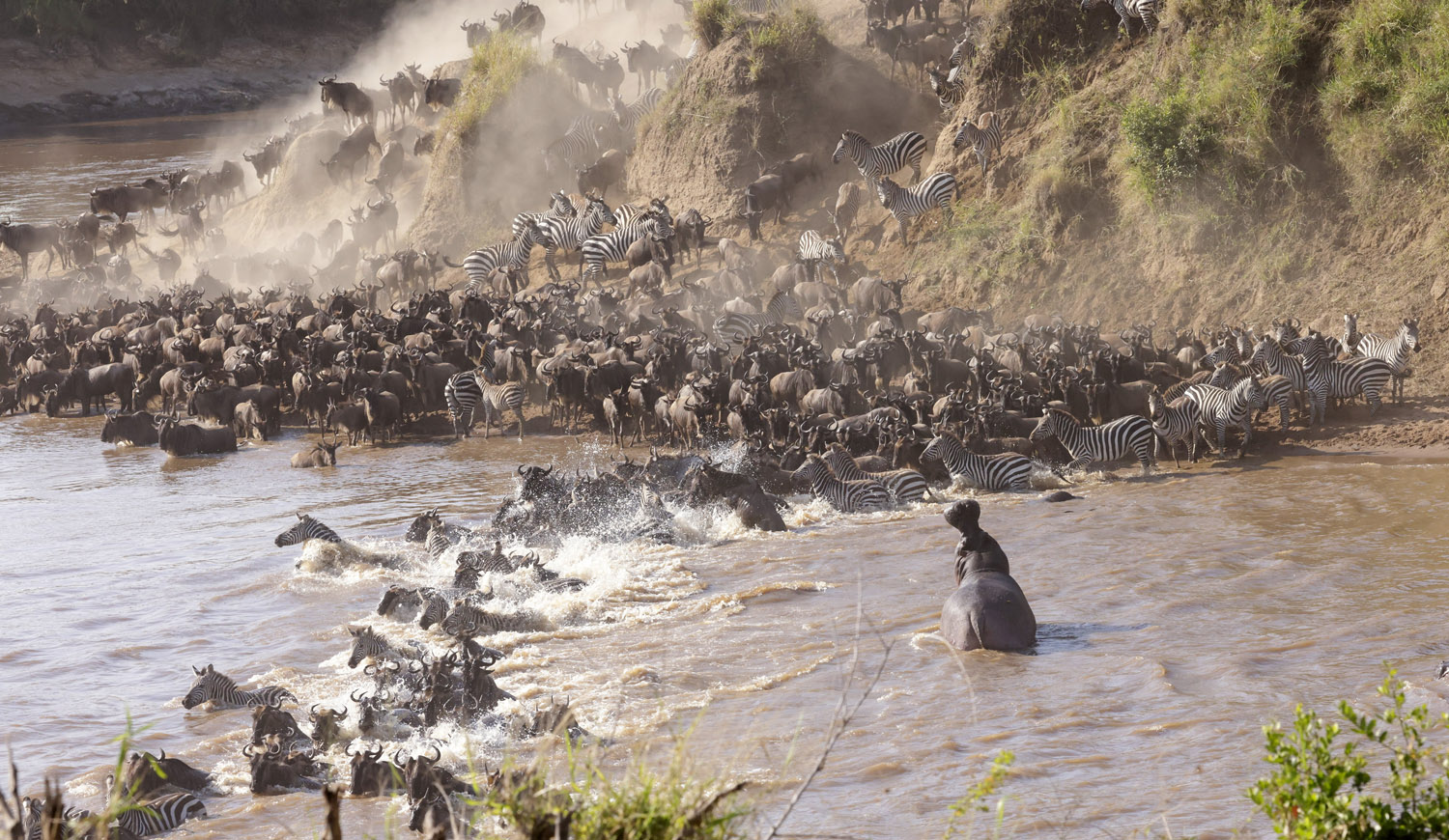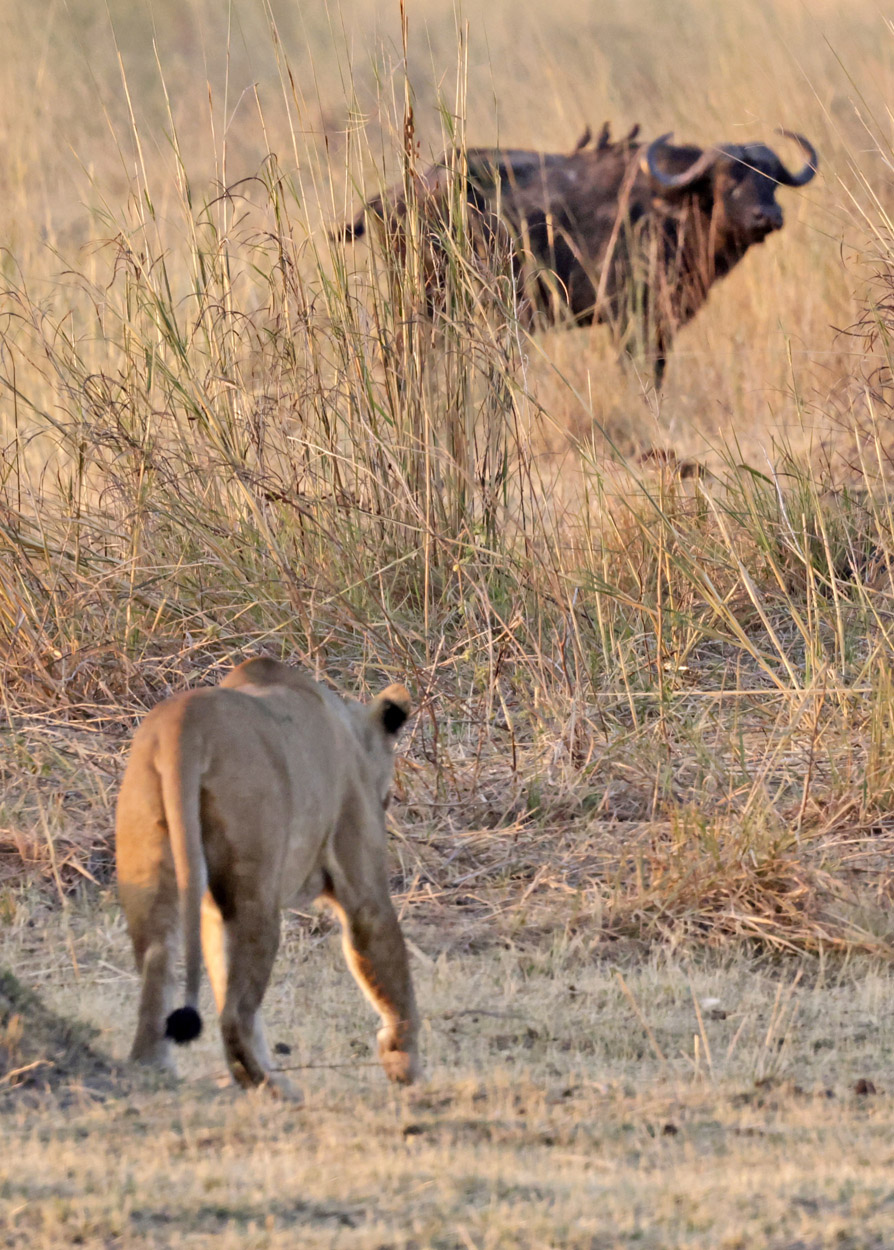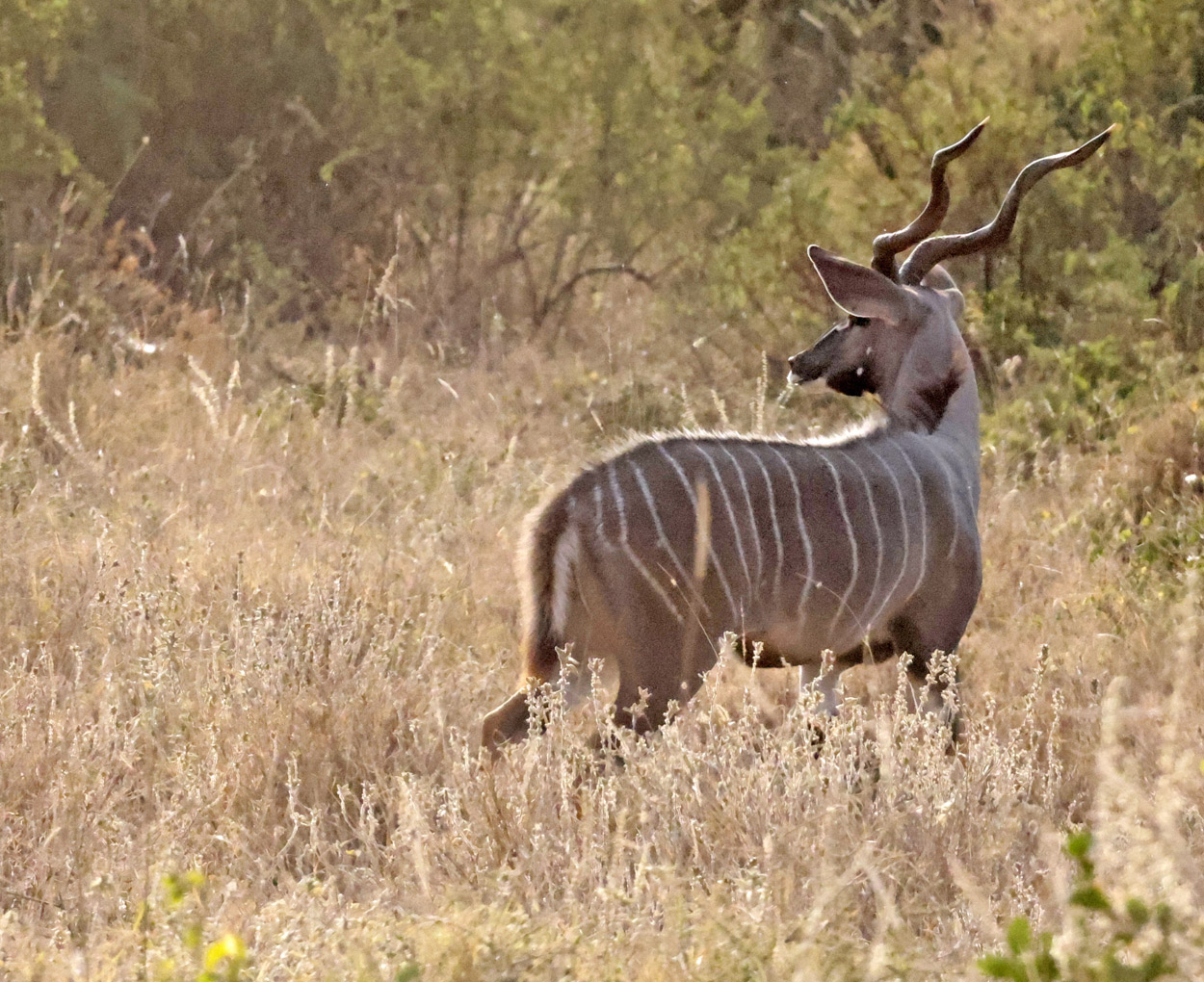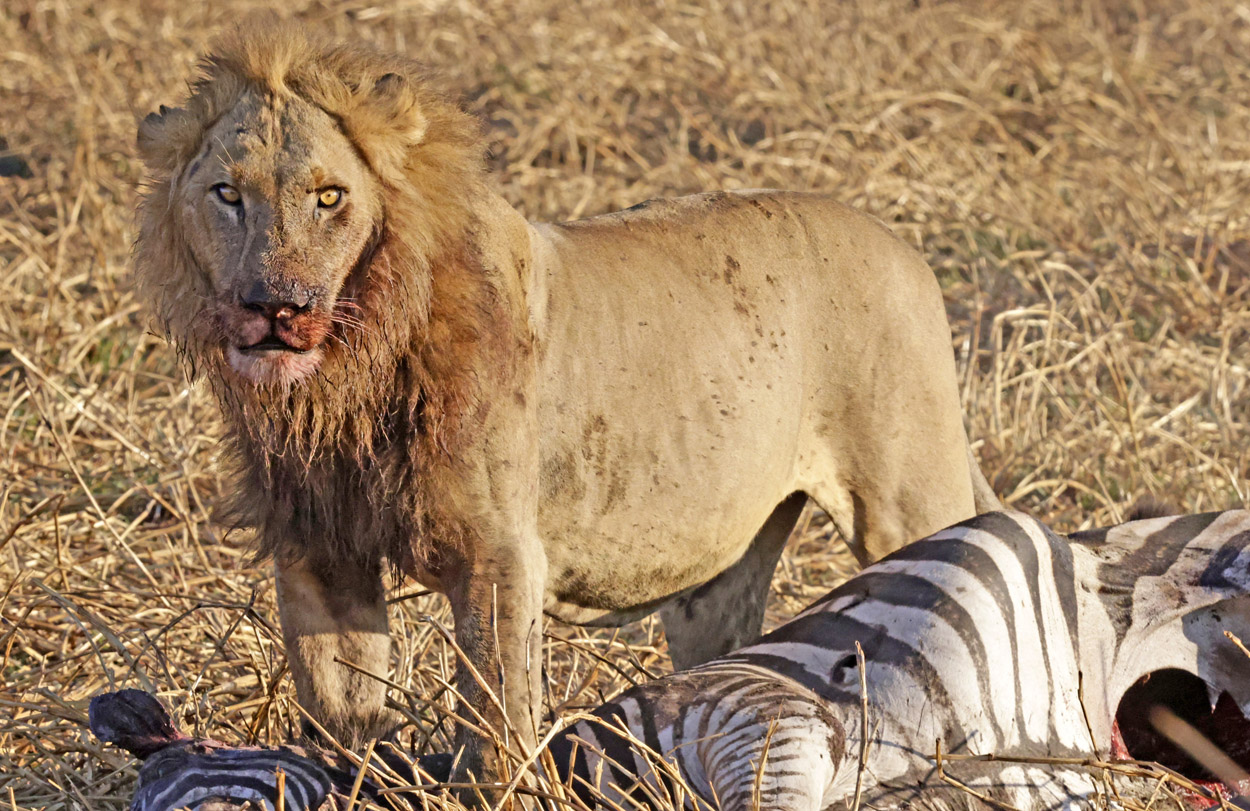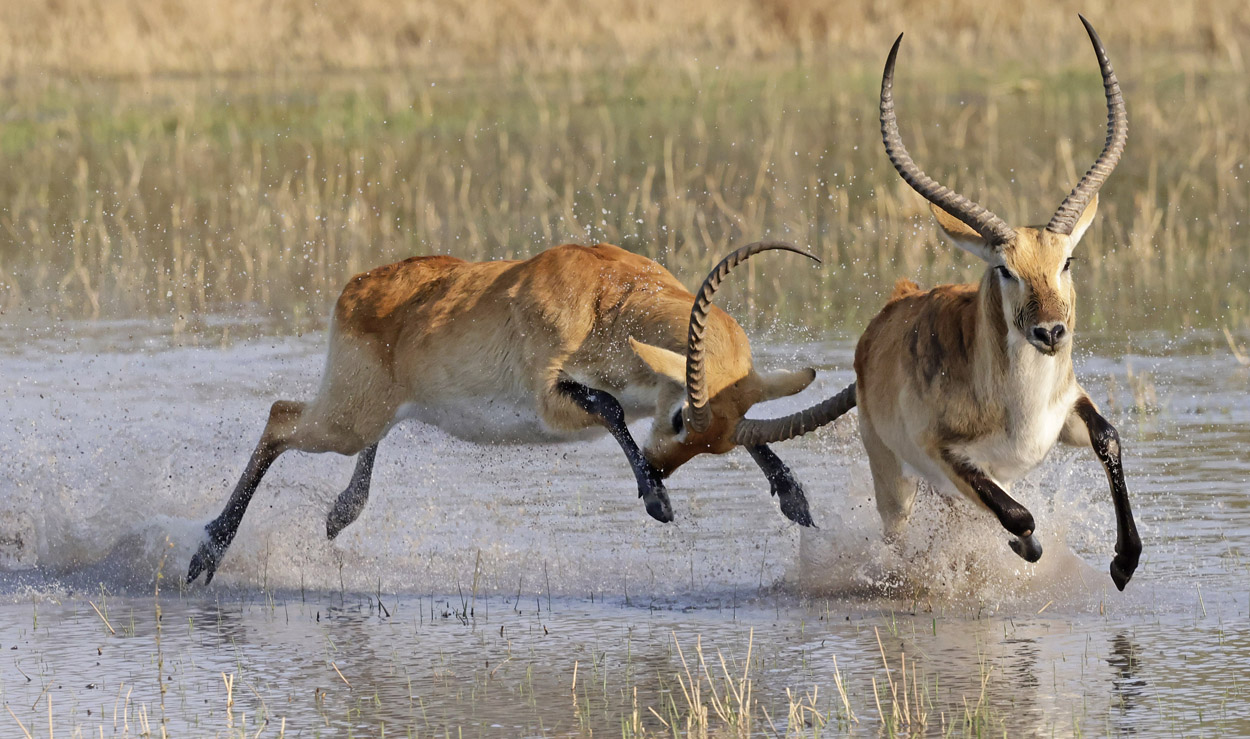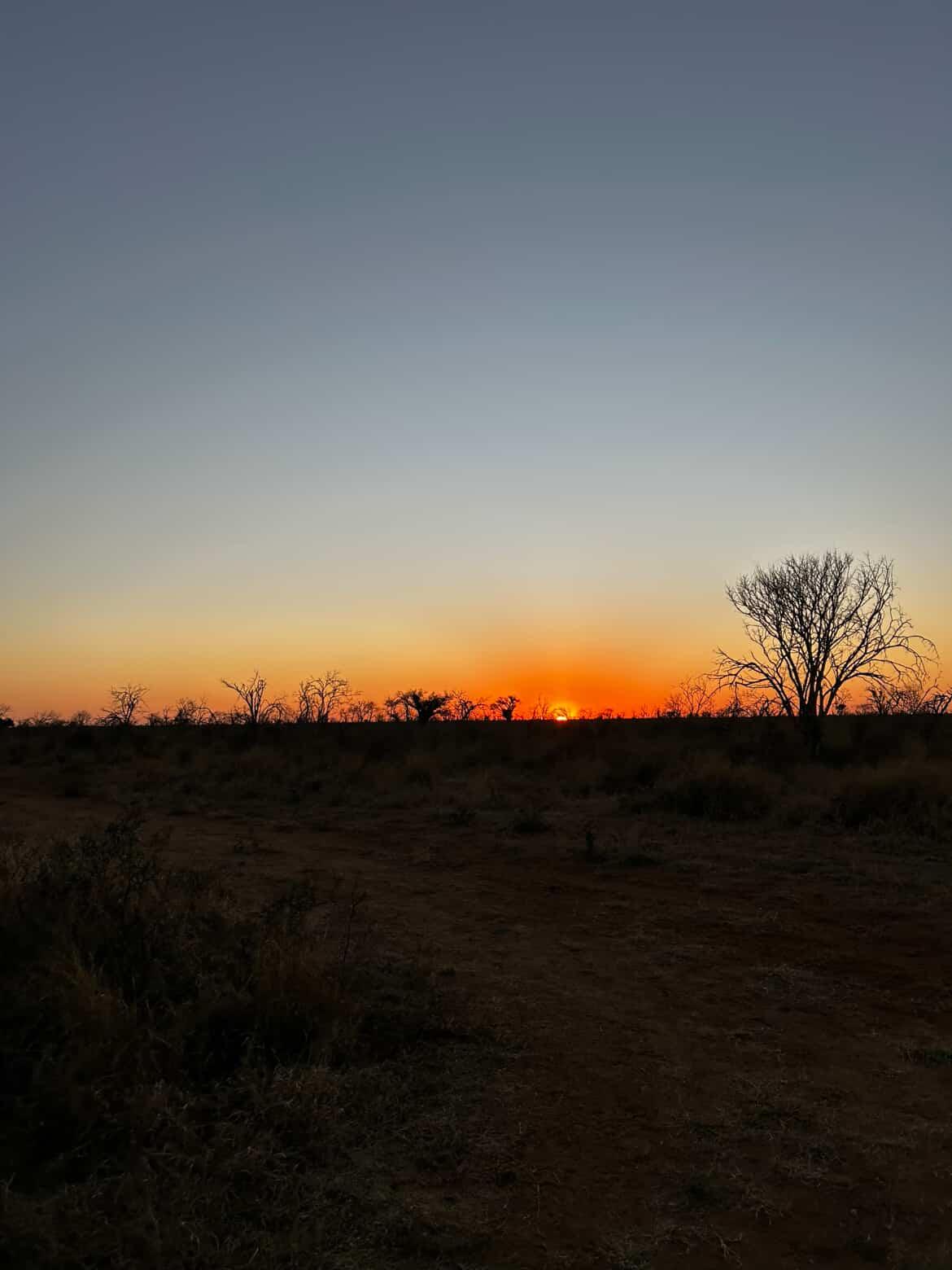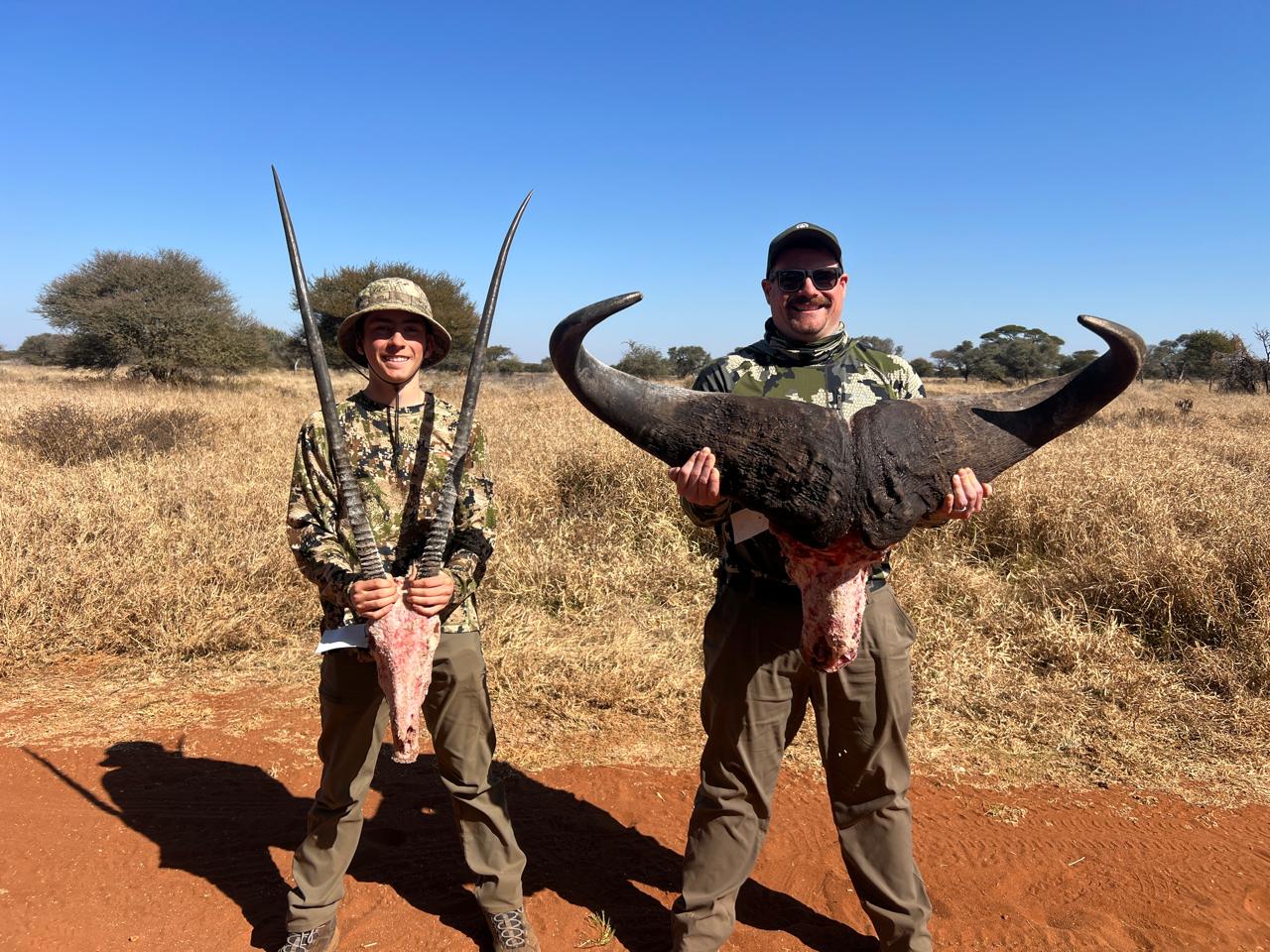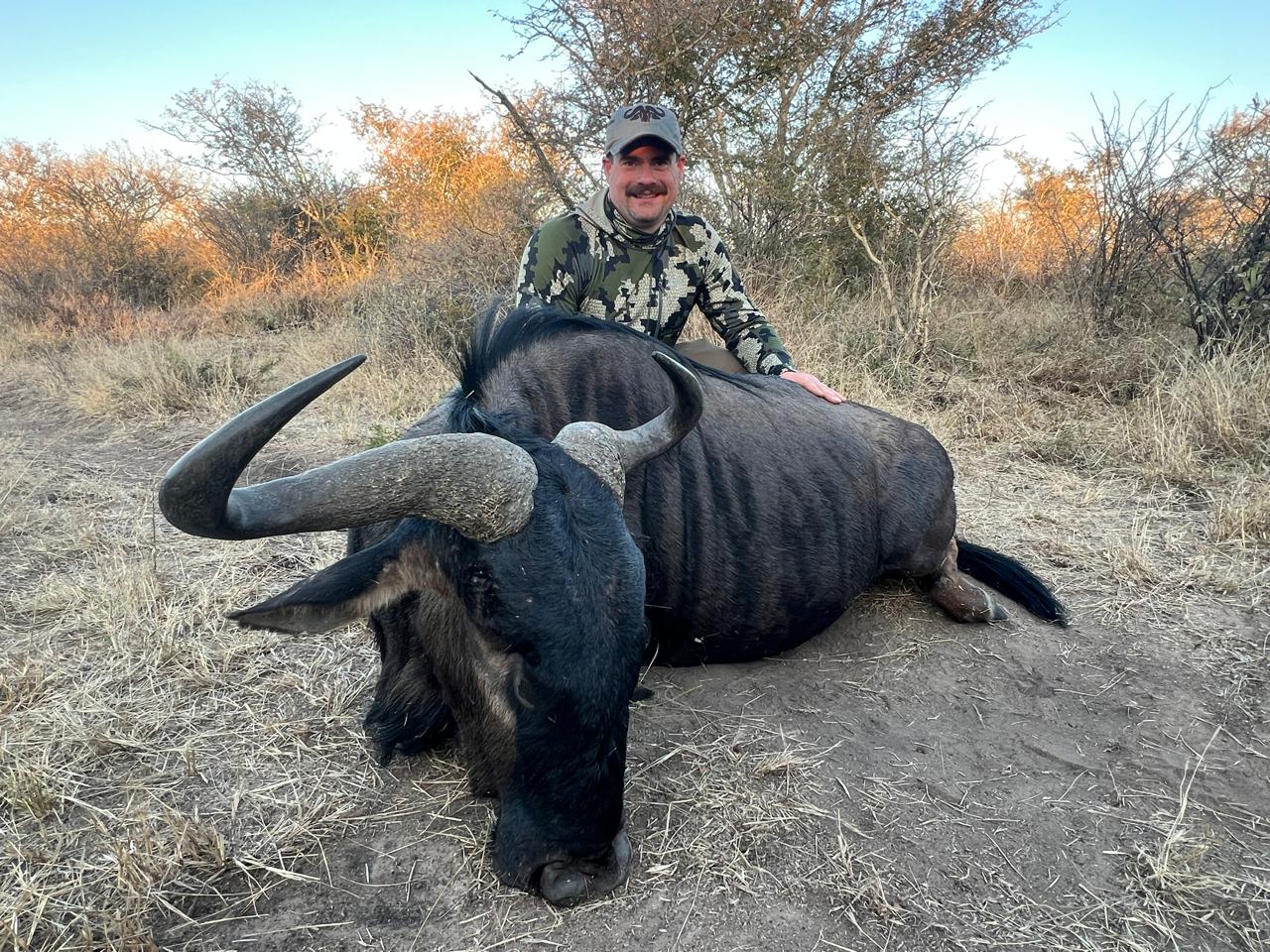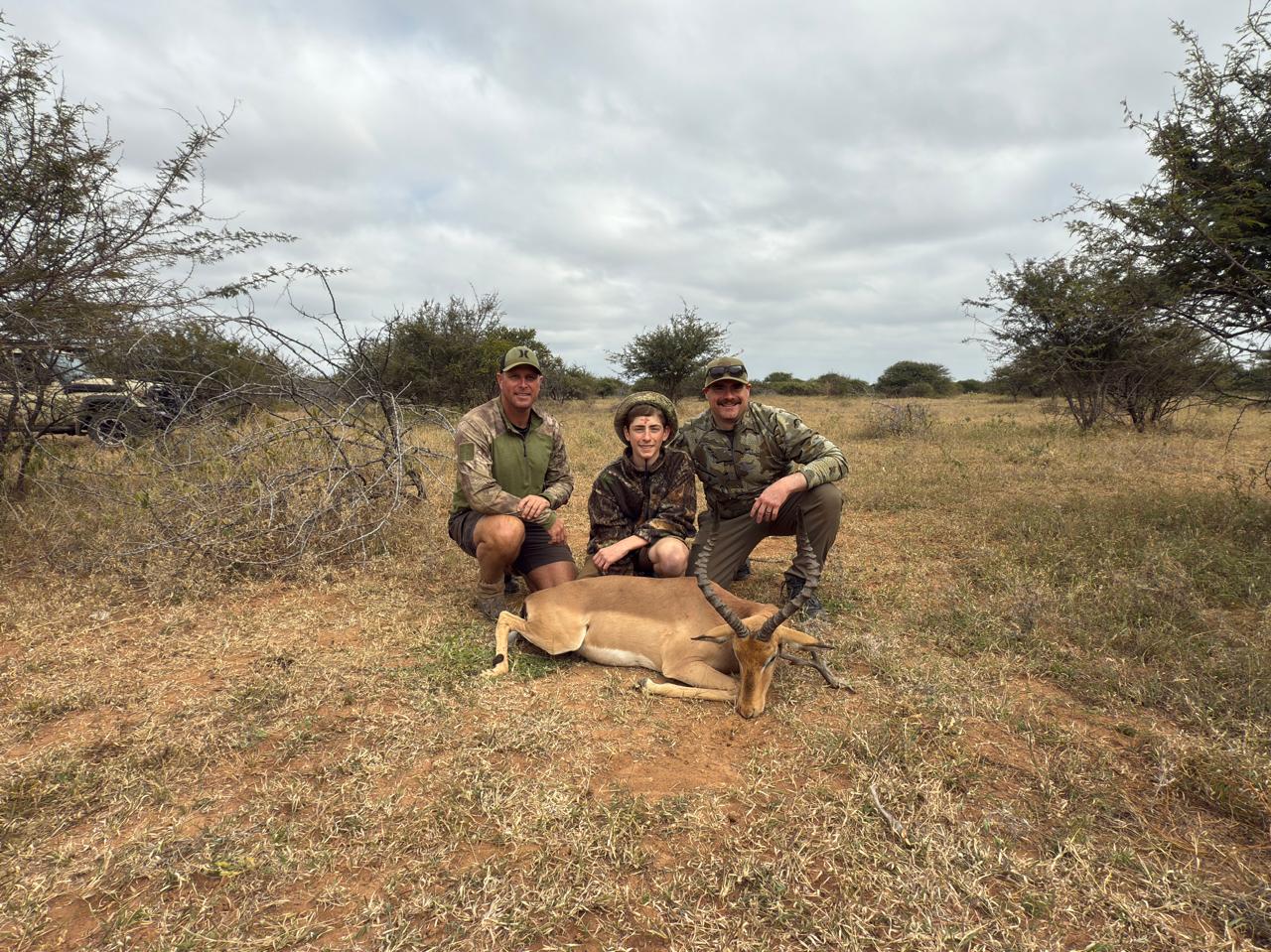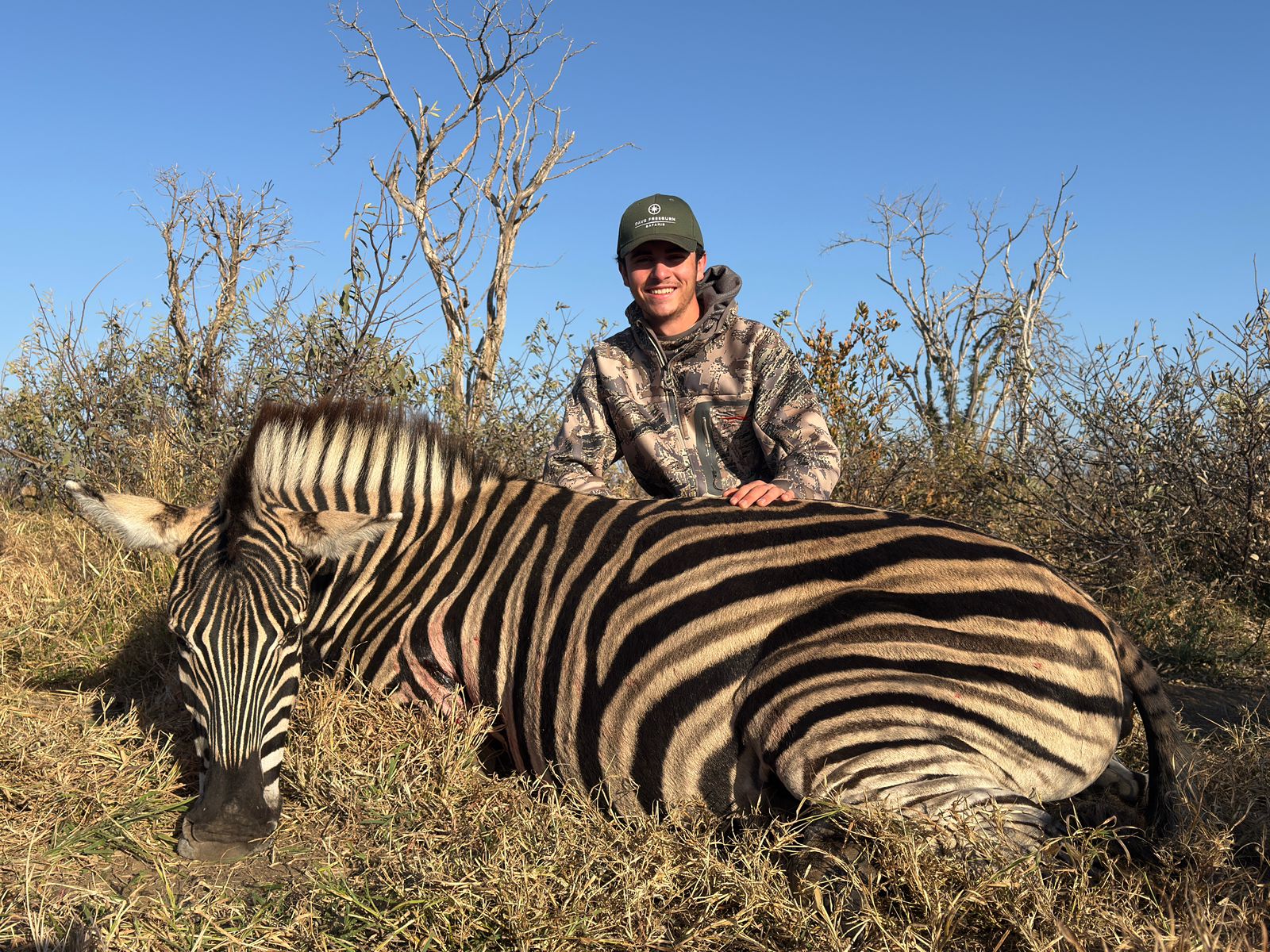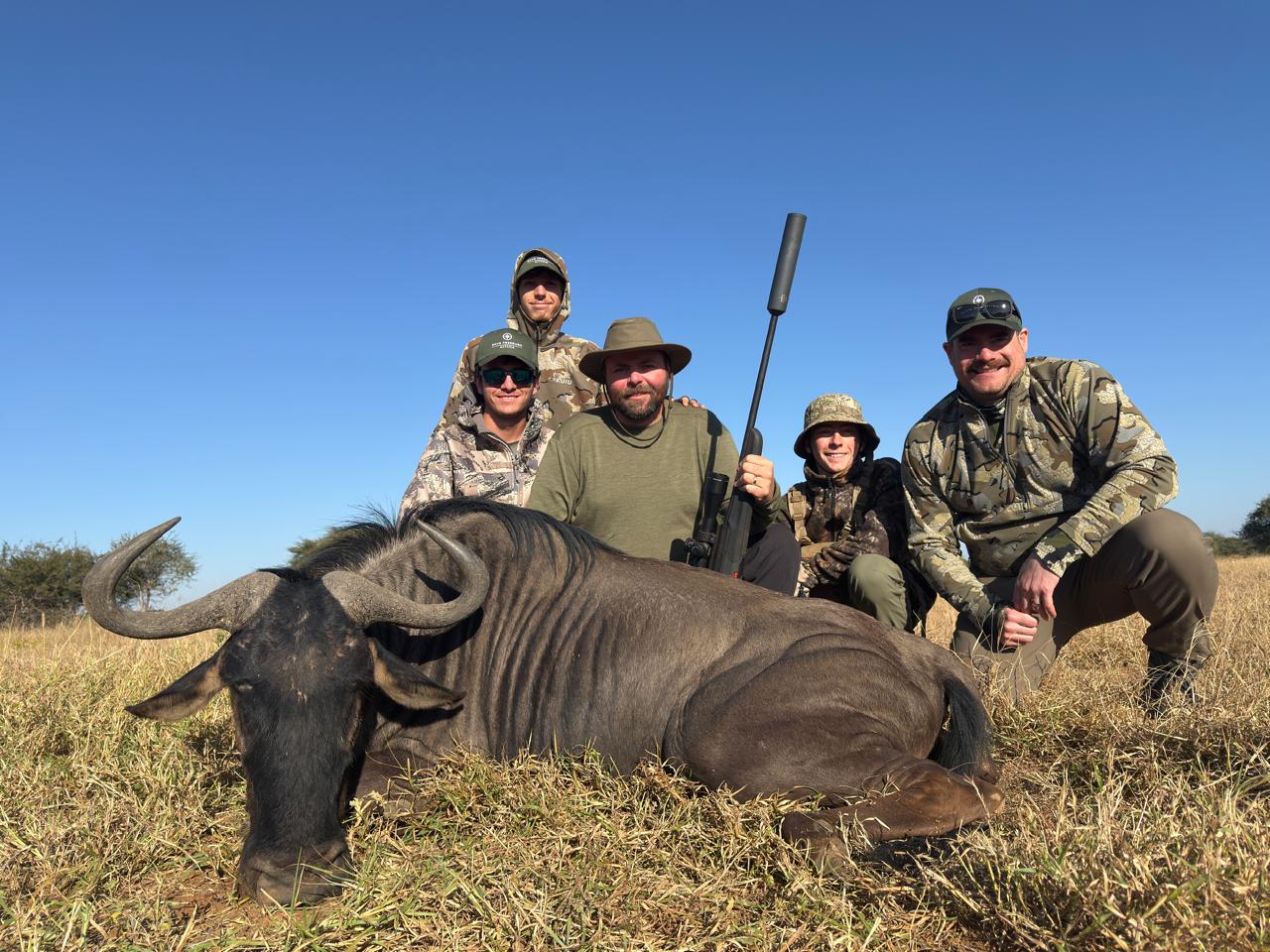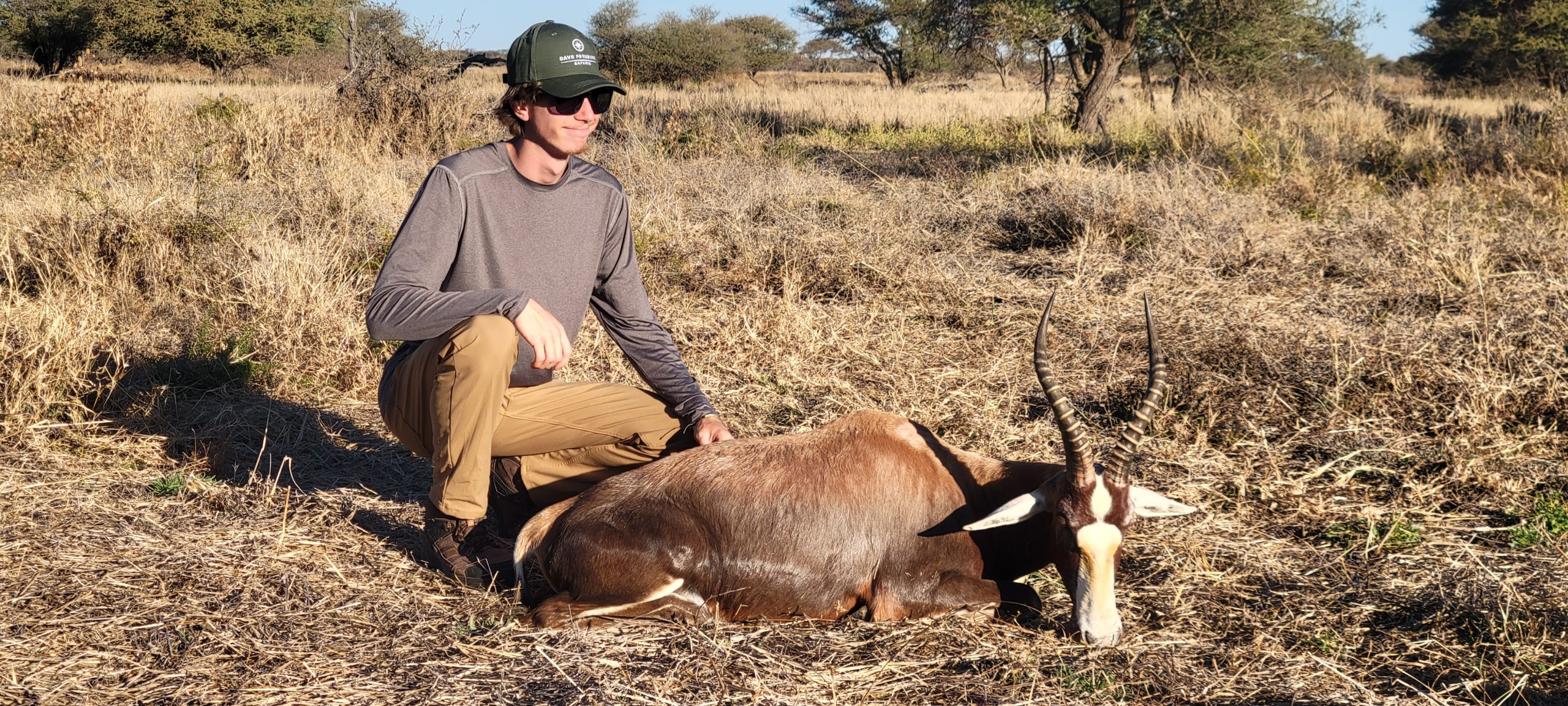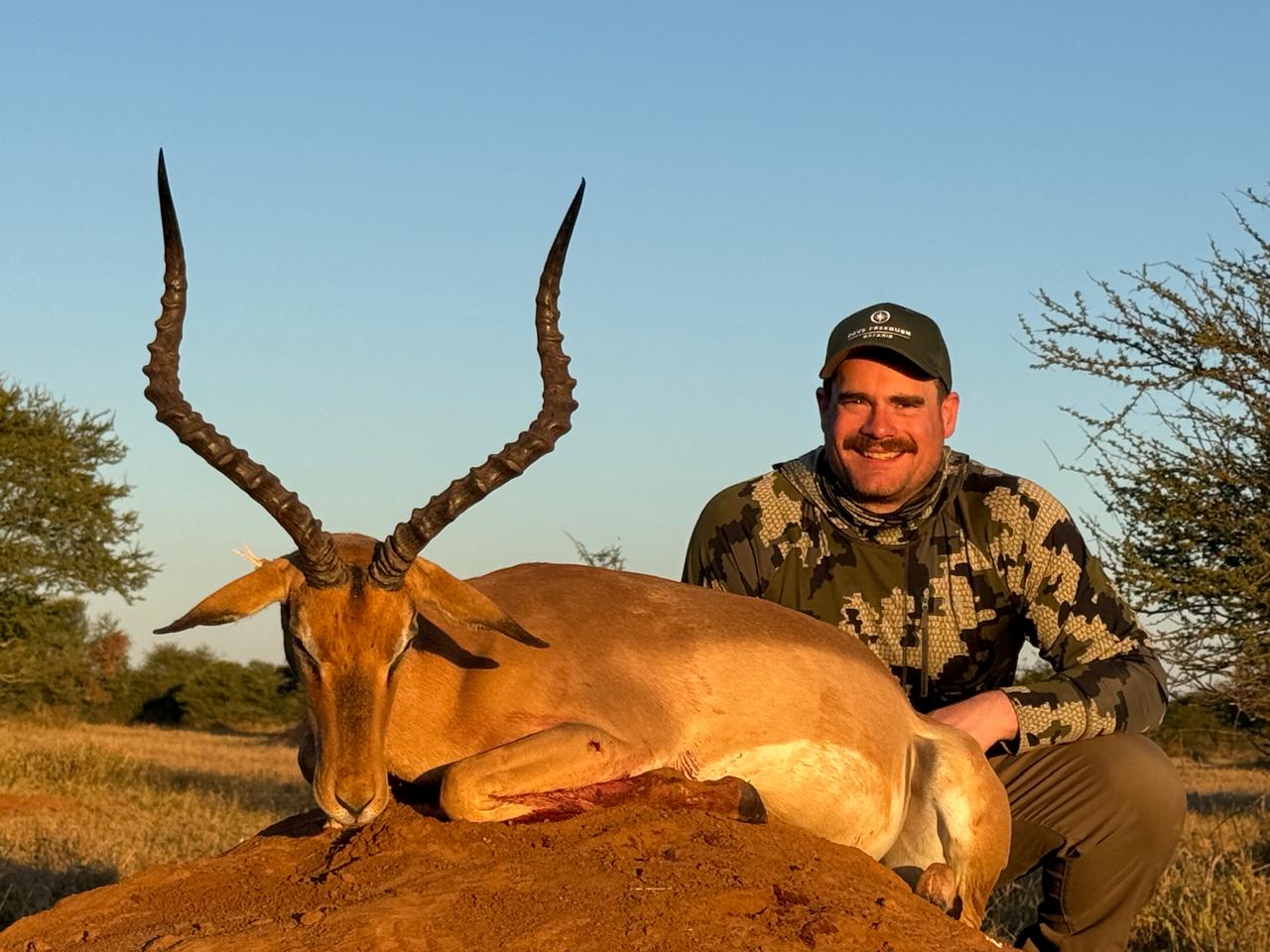Chapter Seven
A Koppie Called Kevin
Via a South African operator, we received an enquiry from a hunter from North Dakota named Ralph Kieley. Ralph mentioned that he had been on nine safaris for leopard and not even seen one. Once we had met Ralph it seemed that he had been on the safaris mentioned, but the main focus had not been leopard on all of them. However, it was clear that he’d been in the wrong areas or else had damned bad luck. Ralph wanted to hunt in 2001 but I was almost totally committed to prior bookings that season. We decided to contact a friend who hunts freelance and who had run several successful hunts for us in the past. I had met Kevin du Boil when he was working for Big Five Safaris, a big game operation in Chewore north safari area in the Zambezi Valley. Kevin had good big game experience under his belt but I was not sure that he had the necessary guile and leopard experience to outwit our Matobo private land leopards.
I had about a week between safaris and decided to accept Ralph’s booking, hire Kevin, but accompany the first part of the hunt. I did not want Ralph to have failed leopard safari number 10, especially since we had been recommended to him as the place to get a cat. I was confident we’d have the leopard wrapped up in short order and I organised George and Bee to take care of a careful pre-baiting plan.
One week flew by without a single hit. I could not believe it. It was just one of those dry spells where the cats were somewhere else. I’m sure Ralph was as sceptical as hell. Two professional hunters, pre-baiting, numerous baits out, and nothing happening. Just like the last time. It must be said though, that it was obvious Ralph had safari experience. He put us under no pressure at all with sarcastic comments and whining complaints. He remained in stoical good humour as the days went by checking baits, hunting for new tracks and calling surrounding farmers for news of any kills. We had one young male start feeding on day six but he was not a shooter.
My own safari was only days away, when on day nine we found a large female had fed on a bait down on the Project. When I asked Ralph if he was prepared to sit for the female since things were looking a little desperate, he answered “No problem – I’m not going back again without a leopard!” After checking the feed and heading back toward camp to collect all the gear for a night out, we saw fresh male leopard tracks on the road, about a mile down the road heading east away from the bait area. I was bitter. This big boy had missed our bait so narrowly. I stopped the jeep and we had a war council with Ralph, Kevin, the trackers and myself. I wanted to track the male’s spoor as far as we could, then flood the area where we lost the track with fresh bait, leave the big female feeding, and hope the male found one of our baits. But time was against us, not only because I had to leave, but also because of the limited time remaining that day to either get all the new baits organised for the male, or back to camp, assemble all our equipment, and set up for the female before dark .We went for the bird in the hand and decided to leave the male. I had a careful look at the track and we measured it. It squared ten. He was obviously a good mature cat and I was irritated and reluctant to let him go.
We returned to the bait at about 3pm and made up our beds, carried out last minute adjustments to the hide camouflage and attached my warning line. It was a drizzly grey overcast day, and we were not looking forward to a possible thickening of the drizzle and a wet night. I put up a frame of sticks over our blind and covered it with leaves and grass to try to keep off the inevitable rain. The plan was for Kevin, George, Peter, Bee and Kevin’s tracker to take the jeep out along the road for about a mile to the east, not far from where we had seen the male track that morning. There was an open rock dwala there and the men could bed down without sand and dust. We were finished with final preparations by 5pm and we settled in for the night. Kevin and the staff rumbled off in the Land Cruiser and slowly the bush sounds hesitantly returned.
As we sat in the blind, we faced east. Imagine three giant whales all swimming away from you to the east. Imagine the two right hand whales being 70 yards apart and the third one to the left, about 130 yards away. Our bait was in a fig tree at the tail of the right hand whale. This particular koppie actually did look a lot like a big whale – as it rose away from us at the tail into a huge domed head to the east. Our hide was about 90 yards away against a leadwood tree which had donkey-berry and other debris as well as some fallen branches at its side. Otherwise we were in an open vlei. Not ideal for camouflage but it was the only spot we liked because of the approach of the cat from the left, or north, and the wind direction from the south east. When we originally hung this bait we had to clear an avenue through some overhanging limbs and other brush for about 25 yards from the bait tree toward the blind in order to see the bait clearly. The leopard, when it fed, would be standing on two horizontal branches and reaching up over its head to feed. The scratches and small pieces of meat and hair left by the female indicated that she had fed in this position.
At about 6pm the drizzle thickened. I was worried that all the moisture would mist Ralph’s scope up so we draped a green cloth over it. Ralph was using a .300 Win Mag made by Magnum Research, which was loaded this night with 180 grain Barnes X bullets. Ralph was quiet in the blind, which was surprising as he is above average in size. I was confident that the big female would come in. Shortly after 7pm the dassies grated out their alarm call and about ten minutes later the warning stick bent like a big catfish taking bait. The stick relaxed, then began to jerk backwards and forwards repeatedly.
She was feeding with gusto. I motioned Ralph into position and when he was comfortable behind the scope, I turned on the light. The now light drizzle was easily visible in the beam but the leopard was not. I was taken aback. We were silent, the wind was good and the blind was a good distance off. What had gone wrong? Ralph could obviously see no leopard in the scope either and was a little confused. I asked him to leave the rifle and aim the spotlight while I looked through my binoculars.
Suddenly, like a snake, the leopard’s tail hung down. The damned thing had climbed on top of the meat, not underneath it! I saw the green-white flash of its eyes as the tail flicked this way and that right where the leopard’s torso should have been! There was no shot as the cat was hidden by the foliage I had left untrimmed at the top of our shooting “tunnel”. I had enough experience to know that a cat may not eat a bait from the same position it had eaten from before, but the flimsy position above the meat had certainly not seemed a possibility to the trackers and I that morning. It was frustrating; there was nothing we could do except sit and watch and hope the cat changed position and offered a killing shot. A few minutes later she flowed down the main trunk and was gone. “What now?” Asked Ralph. I told him that we were warm and comfortable and at this stage, not yet wet, we should stay put. There was always that slim chance that she’d be back. We got back under our blankets and settled in for the night. From so many nights of sleeping out in pursuit of the big cats, I seldom slip into a proper heavy sleep. The slightest noise will wake me and every time I change position, I will sit up and watch the warning stick for a few minutes.
That night the ‘guti’ or heavy winter drizzle increased around midnight then it eased off completely. Shortly after the drizzle ended I must have resigned myself to trying to catch a few good hours of rest before the new day because I don’t remember waking again until just after three-thirty, when violent thrashing of my warning stick woke Ralph and I. She was back! And biting the meat with a fury!
I quickly took the rag off the scope on Ralph’s rifle and cleaned the fogged glass with cotton wool. Ralph moved up behind the rifle and I opened the ‘window’ I’d made for the light. Please, let her be standing in the right spot! I hit the light and even without the binoculars, saw the leopard standing beautifully, exactly where it was supposed to be.
I whispered to Ralph “Shoot, its the leopard” – No shot. Four seconds, five seconds, six seconds … “Shoot Ralph, it’s standing perfectly, side on, head up in the meat. Hit her behind or in the shoulder!” No shot. Just as I was about to ask what the problem was, the rifle cracked and the leopard fell immediately, straight onto my warning wire, snapping it as it hit the ground. There it spun in a fury, growling all the while, then it bounded away towards some rocks and a big fig tree at the tail of whale No.3.
“What took you so long Ralph? How did you feel about the shot?” I asked.
“Couldn’t see clearly,” he answered, “scope still seemed a bit foggy.” We chatted excitedly for a few minutes and it seemed to me that Ralph was not absolutely sure of where he’d hit the leopard. A lightly nicked leopard, and sometimes a leopard shot cleanly sideways through the lungs without hitting bone, will make its way quickly and carefully out of the tree and leave with a controlled leap. A leopard hammered in the shoulder bones or near or in the spine will drop like a sack of meat.
Ours dropped that way, but as I said, it roared and spun around on the ground madly then disappeared. My guess was close to the spine causing temporary paralysis. I’d seen this horrible shot many times on safaris on dangerous game and on all kinds of plains game. The animal drops as if poleaxed. Everyone shouts and shakes hands and there’s joy all round. Then the animal gets up, leaves at speed, dropping very little blood, and an increasingly fruitless follow-up ensues. The sun gets hot, the client gets angry and there is no more laughing and clapping.
However, we were both excited, and I said nothing about my worries. We had not seen the blood yet and all could be well. I fired a shot over where the team had bedded down and they arrived shortly thereafter. Peter and I kitted up for follow up. We moved the Land Cruiser as close to the bait as possible, connected the spotlight and looked carefully where the leopard had fallen. There were a few drops of blood but certainly no lung blood. We decided to make a fire and keep warm for the last forty minutes of the night.
We were champing at the bit to get going but it didn’t make sense to put ourselves in jeopardy since it would be light soon. As soon as we could see clearly, Peter took up the splayed running tracks. I was immediately behind him with the .460 off safe and my 9mm Glock, cocked, and tucked into my belt. Butterflies rose in my stomach as I looked up into the rocks. Into the thorns we go. The tracks led directly to the large fig tree growing against whale No.3’s tail. Koppies two and three were strewn with boulders from basketball size to vehicle size. Plenty of places for a wounded cat to hide. As we reached the fig tree, smears of blood were visible where the cat had gone up the granite into the boulders heading for the head of the whale. The most dangerous part of a follow up on a wounded leopard is when the blood is lost and the day gets warmer, and everyone starts to do their own thing. Nobody covers anyone else. Rifles and shotguns go onto the shoulder or into a one-hand carry. This is when the problems occur.
However, we were 100 percent focused and had blood. Kevin for some reason did not have his rifle and was carrying Ralph’s scoped .300. He was following behind me and George behind him. Ralph and the others remained at the bait. Peter was low down scouring for blood on the rocks. I was over him and very slightly to one side looking into the cracks and rocks expecting the charge. It was not looking good. There was very little blood and the cat seemed to have plenty of power and all limbs working to climb the places he was climbing.
Light droplets and the odd smear now led down off the head of the whale down the left (north) side and angled up the right side of the middle whale. Here we found a place where the cat had rested. The blood was a little thicker, and amounted to about a tablespoon full. Unfortunately, as so often happens in a situation like this, the cat licked the wound until the blood stopped dripping. We were now up onto the head of the middle whale with no blood at all. We carefully tried a few avenues where we thought the leopard would have gone. When those failed we broke into two groups. Kevin, Bee and Kevin’s tracker stayed up in the boulders on top moving eastwards along the ridge. Peter, George and myself followed various paths through the low bushes and rocks down the left hand, or north side. We all moved very slowly, almost inch by inch. It was now about eight o’clock and warming rapidly. I felt that the cat had been hit solidly because of the way it had fallen from the tree. But there was not enough blood to indicate any major artery or organ damage. There were no bone slivers indicating a fractured limb. My guess was high, and behind the shoulder – above the heart and lungs but under the spine. My second guess would be guts – but there did not appear to be an exit wound and no watery stomach blood or gut content.
Almost at the bottom of the middle whale on the left side, Peter found another smear. We beckoned Kevin and his group down, and we sent for Ralph so he could still be part of the hunt – albeit in a safe place. Once again it was Peter and myself leading. I asked the others to all remain in one spot with Ralph. The drops of blood indicated a line to the north, from whale number two, aiming at whale number one about 130 yards away. Between us and the next hill was a fairly open meadow with thick green grass about knee high. Closer to us, at the base of the middle hill, a narrow thicket of Dichrostachys grew along the rocky edge of the vlei – or meadow. Once again the blood disappeared. We literally got down on our hands and knees and went over every blade of grass. Nothing. This went on for another hour or so as we carefully combed through the thicket, returning all the time to the last blood smear. I heard a Natal francolin burst noisily out of koppie number one and decided to go and check it out. It may have been spooked by our leopard. Kevin remained, covering the trackers and I went through the small meadow, rifle at the ready, to where I’d heard the francolin. This is when you are at the highest risk. You’re alone, trying to spot blood at your feet, and you are unable to cover the prime danger area of four or five yards out, let alone to either side of you.
My heart was racing and my adrenaline surged. This hill was much thicker with vegetation and more like the typical koppies in our area. But I found nothing. No blood, no tracks. This was becoming futile. Without blood, we could not close with the cat. I contemplated sending George with the truck to Graham’s house to see if the phone was working, and if it was, to see if Tristan and his dogs were available. Lots of ifs. I walked back across the meadow to the last blood. Again we all got down and swept forward, both to the north and toward the meadow. A successful conclusion was looking unlikely. I had to make a decision – we could not just potter around for the rest of the day. I felt that the cat had licked its wound clean and gone up into the thickly wooded koppie across the meadow. I decided that all of us except Ralph and Bee – who would stay with him -should go across to the koppie and give it a thorough going over. If that failed we should start trying to get hold of some dogs.
Off we set once more, all of us across the grassy meadow to the hill. We were just organising ourselves for a sweep up into the rocks when Bee called us from where he and Ralph had remained. He had found a laying-down position and he said there was a good amount of blood. He was not far from where we had left the last sign, but further west by about four yards – the opposite direction to where we had been looking. I shuddered. Here was Bee and the client, unarmed, and they’d stumbled onto the cat’s last laying down spot. I yelled at them not to move and we all turned out of the koppie’s base back toward the meadow. At this stage Kevin, Peter and Kevin’s tracker were about 20 yards away from George and I, to the east, or left. They were partially hidden from me by scrubby Malalangwe bushes. We were all slowly walking south back towards Bee. Suddenly that guttural burping charging cat belch – like a giant burp inside a 50 gallon drum! A yell from Peter at the same time! The roaring continued! I sprinted a few paces in order to see what the hell was happening – Kevin was yelling blue murder!
I now saw Kevin on his back flailing to keep an enraged leopard off his face! Kevin’s tracker was standing directly behind the leopard exactly in my line of fire – I screamed at him to get down – I had my .460 up ready to go. I could blast the cat easily without hitting Kevin as I was only about four yards from them at this time.
It was now that I saw that we had no wounded female on our hands. This was a giant male leopard! His huge tail was up and thrashing and I saw his balls clearly in that split second. As I screamed at Kevin’s tracker, the giant head came up and the leopard looked straight at me. He leaped off Kevin towards the cover of the hill to my left. Who knows what made him stop. Maybe the pain of his wound or just the fury of battle inside him, but he pulled up short, spun around and came at me. As leopard charges go, it was not a difficult charge to face. The ground between he and I was open and I was ready and could see him clearly. I don’t remember aiming but the .460 roared and the leopard was clubbed to a stop immediately. He never even twitched. He was about six paces from me. The bullet entered his chest just high of centre, and came out the back of his left thigh near the tail. I yelled to find out who was hurt. Peter stood up and Kevin got up slowly nursing his right hand. Ralph and Bee came over while we shredded a shirt and cleaned Kevin’s wounds. I bound his band up tightly to stop the bleeding and made a sling to hold his arm up. On reconstructing the last ten seconds, it turned out that the leopard had been lying all the time in the green grass at the edge of the meadow! I had walked past him three times!
When we had all turned to go back to investigate Bee’s discovery, Peter had walked straight into the cat. As he saw it and yelled “Nansi” (there!) – he hit the ground. My staff had learned this as I hammered it into them over and over -when the shooting starts, they must be out of the way, flat on the ground. As Peter hit the ground, the enraged animal had streaked out of the grass, landed on Peter’s back and sprung at Kevin leaving Peter with two shallow scratches.
Kevin was in pain now with some deep bites to the hand and fingers and various claw scratches on his arm and abdomen. As it turned out later, his finger ligaments were quite badly damaged and he received a good number of stitches – and many painful visits to his doctor. He was lucky, in this instance, that we were all together as I feel the cat would have mauled him longer than the few seconds it allocated him this time. The yelling at Kevin’s tracker had probably pressured the enraged cat into leaving Kevin and going for cover.
We all went over to look at the giant leopard. It was a beast of a male and I kick myself for not having had a good spring scale in the truck at the time. It was definitely one of the heaviest cats I have ever seen. He was in prime, beautiful condition with a few fight marks on his neck and head. He had magnificent mountain-type markings, especially along his spine. It was just pure luck that we had not been offered a shot at the female. If we had, we would never have seen this beautiful animal. This male was the one whose tracks we’d seen the previous day. They returned down the same road, skirted where the boys had slept, followed the southern-most whale, and walked straight into the bait in the early hours of the morning! The female’s tracks went north from the bait towards a pool in the Ingwezi riverbed. This big female was taken two seasons later in the same spot, and she was a beauty. The big male had been hit just above the left hip and through the kidneys into the guts, and then into the right back leg. It must have had its back legs at extraordinary angles on the branches as it sought to tear the bait down. The internal damage had ensured that he didn’t get far. Although the external bleeding was minimal, there was considerable bleeding inside and had we not found him, I think he would have expired that day.
Ralph was happy that we had recovered his cat, but obviously was concerned over Kevin’s wounds. We gutted the cat as it was now quite hot and it was a good hour and a half back to the mountain camp. When we got there we cleaned up Kevin’s wounds with hydrogen peroxide and hot water, followed by a powerful disinfectant and then dispatched him to Bulawayo for proper medical attention.
We took many beautiful pictures of Ralph’s cat before skinning him out. His skull later measured over 17 inches, which put him right up near the top of the record books. Another giant Matobo male had walked his last mile and Ralph finally had his leopard. From that day on, all our hunters and staff, when referring to the three whale hills or giving directions nearby, would say, “lapa – Kevin” (there at Kevin). It seemed a good name for a koppie, and the name has stuck.
